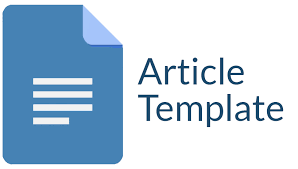Penerapan Teknik Imajinasi Terbimbing Untuk Mengurangi Nyeri Kepala Pada Pasien Hipertensi Di Rumah Sakit Daerah Kota Lubuklinggau
Abstract
Background: Hypertension is an increase in blood pressure from arteries that is systemic or persists in a long period of time. Hypertension can cause headaches. Guided imagination therapy is a technique of using individual imagination that specifically aims to achieve control in relaxation, relaxation can have a direct effect on body functions, the effect of relaxation is to reduce pain in hypertension. The Purpose: this is to determine the reduction of the headache scale in hypertensive patients. before and after the Guided Imagination Technique was applied to the feet to reduce headaches in the Al-Ikhlas room of the Siti Aisyah Hospital, Lubuklinggau City. Research Metods: This is a descriptive study using a case study approach. The subjects in this study were 2 adults with a diagnosis of hypertension. The treatment is carried out directly with the initial assessment of the headache patient and then the intervention of the Guided Imagination Technique to reduce headache pain. The results: it is known that after nursing interventions for 3 consecutive days there is a decrease in the pain scale from the healing time using other drugs. It is hoped that health service institutions can improve the quality of nursing care that focuses on hypertensive patients who experience headaches with the application of Guided Imagination Techniques so that the Guided Imagination Technique intervention SOP can be developed again.
Copyright (c) 2021 Journal of Complementary in Health

This work is licensed under a Creative Commons Attribution-ShareAlike 4.0 International License.
Authors who publish with this journal agree to the following terms:
- Authors retain copyright and grant the journal right of first publication with the work simultaneously licensed under a Creative Commons Attribution License that allows others to share the work with an acknowledgement of the work's authorship and initial publication in this journal.
- Authors are able to enter into separate, additional contractual arrangements for the non-exclusive distribution of the journal's published version of the work (e.g., post it to an institutional repository or publish it in a book), with an acknowledgement of its initial publication in this journal.
- Authors are permitted and encouraged to post their work online (e.g., in institutional repositories or on their website) prior to and during the submission process, as it can lead to productive exchanges, as well as earlier and greater citation of published work












